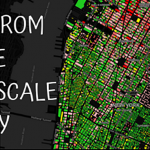Crain’s New York Business | May 18, 2018
To the editor:
It is important to rectify a number of assertions made or implied in the Real Estate Board of New York’s recent letter. (“Letter to the editor: Next Landmarks chair must continue balancing the city’s various interests”).
Our historic districts are thriving with new development. Manhattan Community Board Five has seen the construction of 10 residential buildings in the small Ladies Mile Historic District in recent years. The buildings underwent a public review process that didn’t stall any project; they received support by the community board; all permits were promptly obtained; and affordable housing was included in some developments in exchange for added density. Being in a landmarked district did not hinder these developers’ ability to construct good residential buildings. One of these buildings offers 58 affordable-housing units, proving the point that affordable housing and preservation can co-exist and benefit from each other. The marketing brochures for these buildings emphasized the great qualities of the historic district as being a strong sales point. A historic neighborhood is an asset on the balance sheet.
Any affordable-housing unit, in a historic district or otherwise, generally requires a great deal of advocacy by our community board in order to be built. So many examples come to mind. Manhattan Community Board Five had to strongly advocate to get four units of affordable housing at 41 W. 23rd St., an ultraluxury condo. Last year a new luxury condo development on West 18th Street (the Adorama site) triggered the mayor’s housing program, MIH. The developer obtained a generous special permit allowing a larger, bulkier building than permitted as-of-right. However, they felt that they should not comply with MIH requirements. Instead of asking their design team to evaluate the feasibility of adding affordable housing, they hired their most combative lawyers to fight the community board and housing advocates. Unfortunately, we lost this fight. We hope that REBNY will call on the developer of a new luxury tower at 110 E. 16th St., for example, to comply with MIH and build desperately needed affordable housing.
Often, developers abhor preservation as they claim it is a deterrent to affordable housing. At other times they reject affordable housing as they claim to cherish preservation. It is a shifting, self-serving rhetoric that illustrates their true priority: increasing the number of as-of-right, market-rate projects. The binary argument that affordable housing and preservation are enemies is dangerous and fallacious. Falling for it will get us neither affordability nor preservation.
We concur with REBNY’s president: Balancing the city’s various interests is paramount. Manhattan Community Board Five wants to safeguard the quality of life, preservation and affordability of our district while developers remain prosperous. These goals are compatible. With the help of sound housing and preservation policies, New York can remain a vibrant and livable city. Those who claim otherwise are not trying hard enough.
Layla Law-Gisiko


